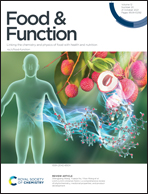Effect of urolithins A and B on ectopic endometrial growth in a murine model of endometriosis
Abstract
Endometriosis is an often painful disease in reproductive-aged women, in which endometrial-like tissue grows outside the uterine cavity. Since the limited current therapeutic alternatives fail in alleviating the symptoms and based on our previous research in in vitro models using the same compounds as the ones used in the present study, we aimed to evaluate the effects of urolithins A (UA) and B (UB) on the growth and survival of endometriotic-like lesions in a murine model of endometriosis. Female BALB/C mice were surgically induced with endometriosis and treated with 2.5 mg kg−1 day−1 intraperitoneal UA or UB. The mice were monitored daily and weighed and the estrous stage was determined. After 28 days of treatment, lesions were counted, measured, excised, and fixed. Both urolithins proved not to affect the estrous cycle or body weight of the mice. UA completely prevented endometriotic-like lesions, while UB diminished the implant volume (p < 0.05). Treatment also reduced epithelial and stromal cell proliferation within the implants (p < 0.001 and p < 0.01, respectively) and apoptosis was enhanced (p < 0.05 and p < 0.01, respectively). These results are promising and reveal that urolithins A and B, separately, have a beneficial effect on the overall endometriotic growth without affecting the body weight or estrous cycle.



 Please wait while we load your content...
Please wait while we load your content...